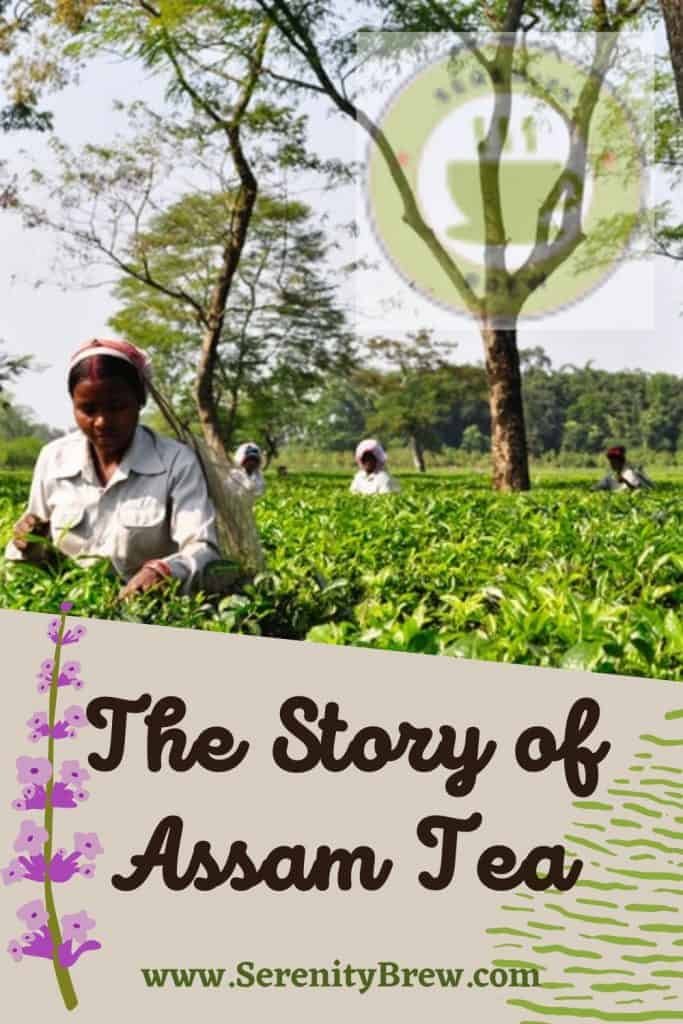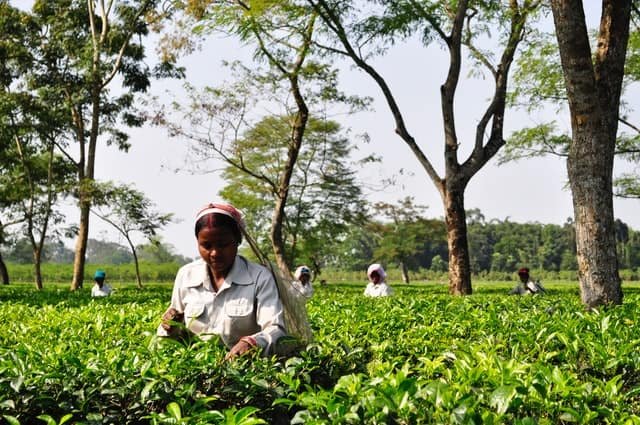
The history of tea is full of legends, historical facts and anecdotes. The one about Assam tea, specifically, contains a Scottish explorer, a pact with a local tribe, death and success during the height of the British Empire. How about? Gives for a series, right?
Assam tea is appreciated for its intense flavor and body. In fact, it’s more famous than you think, as it’s a key ingredient in many classic British breakfast teas. Join us to meet him.
What is Assam tea?
Assam is a black tea grown and made in India, specifically in the region to which it owes its name: Assam.
The State of Assam is a large producer of tea. The cultivation occurs at very low altitude, practically at sea level. The resulting teas stand out for their body and liveliness and malty flavors and reminiscent of cocoa. Its infusions usually result in strong and bright colors.
A differentiating fact about Assam tea is that it is made (although, as in all teas, mixtures of plants and varieties come into play) from a specific variety of tea plant: Camellia sinensis var. Assamica. This marks a different character from that of most teas, for example Chinese, which use Camellia sinensis var. sinensis.
A special tea plant: Camellia sinensis var assamica
The Assam region gives its name to the assamica variety of the tea bush (Camellia sinensis assamica). The plant is believed to have originated at the crossroads between Tibet, Southwest China and Indo-Burma. It is currently common in India and in the Chinese province of Yunnan.
This variety can grow up to three times the size of its Chinese cousin. Its leaves are larger and wider, shiny and dark green. It is used to tropical and subtropical climates, where it thrives in humidity and warm temperatures.
Teas made from this variety are often used for making black teas, although delicious pu-erhs and white teas are also made in Yunnan.
The taste of Assamese
Assam black teas are renowned for their rich, malty flavor and full-bodied, dark infusions. This makes them ideal for well-known British mixes like English Breakfast or Irish Breakfast. We can also find it as a base for the famous chai tea, which includes spices and milk.
In short, Assam black teas offer a powerful and solid base that accepts combinations well with other elements.
An adventure story
The story goes that, back in 1823, Robert Bruce, a Scottish explorer, noticed the existence of plants similar to those of tea during one of his trips to the city of Rangpur, in Bangladesh.
Through the local people, he came into contact with the singhpos tribe, who showed him how they consumed an infusion made from the leaves of that plant. Bruce made a deal to be provided with seeds and leaves of this mysterious plant so he could study it.
Unfortunately, Bruce died a few years after these events, without seeing the results of his efforts, but his brother Charles sent the samples to the Calcutta botanical gardens, where they were classified as a variety of tea and named Camellia sinensis var. Assamese. Assam tea was born! Well, let’s just say it had been discovered by Westerners.
The Assam Tea Company was the first company that was born to exploit the cultivation of this new variety of tea. The company grew, new ones sprung up, and the tea business expanded to over 160 tea plantations.
The British East India Company, as part of the colonial administration, took matters into its own hands and created a committee of experts in 1834 to assess the potential of the tea market in Assam. This led to the transformation of agriculture in the region to focus on the cultivation of tea.
The administration imported Chinese tea growing and manufacturing methods that displaced traditional Assam ones. Initially, even seeds of the Chinese variety of the tea plant were used, although after a period hybridization with the local plant best adapted to Assam conditions was achieved.
The place
Assam is the second largest tea-producing region in the world, after southern China. Although its name is inextricably linked to its famous black teas, it also produces green and white teas in much smaller quantities.
The area is characterized by its tropical climate, with abundant rainfall and warm temperatures that reach 40ºC during the day, making the region one of the most suitable in the world for tea production.
The soils are clayey and with little elevation. Assam tea cultivation occurs practically at sea level.
Assam is located in the northeast of India. The great river Brahmaputra crosses it from east to west and bathes the soil of a fertile valley guarded in the north by the Himalayan mountains.
It is an area rich in biodiversity, which is home to some endangered species such as the Indian rhinoceros. The Kaziranga National Park brings together the largest number of specimens of this species left in the world.
Elaboration process
Different varieties of tea are produced in the region, but if it is famous for something, it is for being the cradle of the great black teas of Assam.
Tea leaves are harvested at two different times, the first at the end of March. The second harvest, which occurs a few weeks later, is considered to be of higher quality by local farmers, as the harvested buds produce fuller-bodied teas with sweeter flavors.
After picking, fresh tea leaves are allowed to wither to reduce moisture. With this, volatile components such as caffeine and flavors begin to intensify. A short wilting phase makes the leaves greener and retains vegetal flavours, a long wilting phase intensifies the aromas and darkens the leaves.
After this, the leaves go to a mechanical phase where they are rolled. This causes the leaves to exude their essential oils and sap, intensifying their flavor.
To make black varieties of tea, the leaves go through a longer oxidation process. It is in this phase where chemical compounds related to flavors are developed and intensified. The aromas and flavors change completely between the varieties with little and with a lot of oxidation. The leaves are left to rest in controlled conditions of temperature and humidity until the desired degree of oxidation is achieved.
Finally, to ensure its preservation, the tea leaves are gently dried.
Make yourself a nice cup of Assam tea

Although Assam is a common breakfast companion for many English families, it is an all-round tea. It will meet your expectations whenever you fancy an intense and full-bodied tea. Its malty flavor is comforting when drunk hot and its bitterness is refreshing if you drink it cold.
Unlike other more delicate teas, Assam tea is also a good choice when you want to accompany a meal or snack. It has enough character to not go unnoticed in any situation.
